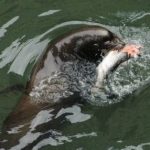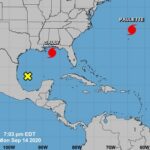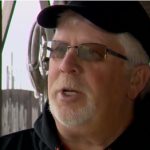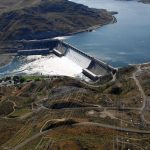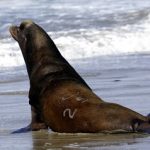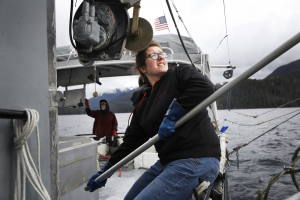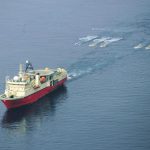Tag Archives: Brent Paine

Bering Sea crab collapse spurs push for stronger conservation measures
For Bering Sea crabber Gretar Gudmundsson, December is a month for preparing his two boats for the winter harvest season. But not this year. For the first time, the winter snow crab season has been scuttled. The move has upended seasonal rhythms, and the financial stability of a crab fleet already slammed by a two-year shutdown of the fall harvest of red king crab. “We didn’t ship up any groceries. We didn’t recruit any crew. We’re not laying on fuel. Nothing is happening,” Gudmundsson said. Crabbers are pressing for more restrictions on pollock fleets, which deploy large cone-shaped trawl nets to scoop up more than 3.2 billion pounds annually of this fish in the biggest single-species harvest in North America. >click to read< 11:55

Bycatch task force considers new rules, more research to protect Alaska fish intercepted at sea
In the search for a solution to the problem of bycatch, the unintended at-sea harvest of non-target species, the stakes in Alaska are high. Now a special task force is nearing the end of a year-long process to find solutions that satisfy competing interests to the problem of bycatch, which refers to fish that are caught incidentally by commercial fishers who are targeting other fish. The Alaska Bycatch Review Task Force, created by Gov. Mike Dunleavy last November, is due to release its final report by the end of next month. At least two additional meetings are to be held between now and then. >click to read< 11:50
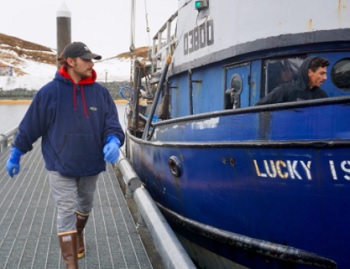
Coronavirus closes a third Aleutian plant, stranding Bering Sea fishermen at the dock
In the Aleutian port town of Unalaska, at least five local boats are stuck at the dock with nowhere to deliver their cod after the shutdown of the Alyeska Seafoods processing plant, according to a crew member on one of them, Tacho Camacho Castillo. Alyeska closed its plant Friday “based on a cluster of positive cases” identified through “surveillance testing,” the City of Unalaska said in a prepared statement. “There’s two days and this fish starts to spoil,” Camacho Castillo, a crew member on the 58-foot Lucky Island, said in an interview Friday. “Am I going to be throwing out fish into the ocean? It’s going break my heart, for real, if I throw all this fish away.” >click to read< 18:38

Seafood industry seeks protection from Russian military exercises in U.S. waters
U.S. Coast Guard capability to safeguard national interests and promote economic security in the Arctic will be the subject of a congressional hearing on Dec. 8, one in which Alaska’s commercial fishing entities have a special concern. “From our vantage point, on the front lines of a changing Arctic, a robust U.S. military presence to protect U.S. interests in the region is simply non-negotiable,” said Stephanie Madsen, executive director of At-Sea Processors. The trade association, based in Seattle, represents six member companies who own and operate 15 U.S. flag catcher/processor vessels who harvest Alaska Pollock in the Bering Sea and Aleutian Islands and Pacific whiting in Pacific Northwest coastal waters. >click to read< 08:26

Trawl fishing in the age of the coronavirus: First, you make it through quarantine
Hundreds of crew members went through two weeks of shore-side quarantine coupled with testing for the novel coronavirus that did identify a few who, if they had gone out to sea, risked sickness and spreading the virus. “There’s no silver bullet. But this is a huge deal,” said Karl Bratvold, a managing partner of Aleutian Spray Fisheries, which operates the catcher-processor vessel Starbound now harvesting whiting in open waters off the Olympic Peninsula. “We have a steady crew. And I’m glad they came back. They work in tight quarters and it’s scary out there. We had to do what we had to do to keep these people safe.” photos, >click to read< 13:27
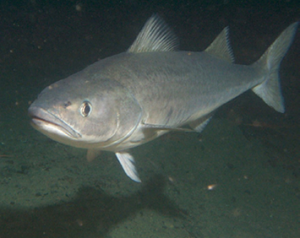
There’s a new fight over Bering Sea black cod.
Record numbers of young black cod, also known as sablefish, are swimming off Alaska’s coast; scientists estimate that this group of fish, which had huge reproductive success in 2014, is twice the size of the next-largest on record, from 1977. The small-boat fishermen who catch black cod, many of whom live in Southeast Alaska, are eagerly waiting for the young fish to grow larger and commercially valuable. But they’re getting frustrated seeing increasing numbers of black cod caught accidentally, as bycatch, by the Seattle-based trawlers that target lower-value species in the Bering Sea, like the pollock that go into McDonald’s Filet-O-Fish sandwiches. >click to read< 16:43
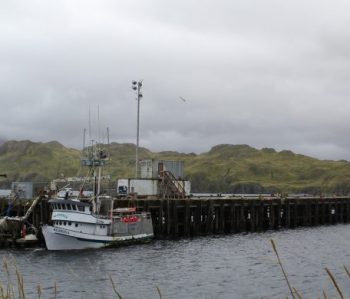
Amid a big fight for cod in the Bering Sea, can remote Adak survive?
A heap of slimy fish heads nearly filled a deep tote. Above, workers finished sorting stacks of decapitated halibut they had run through a grim mechanical apparatus. “Right here we have a guillotine blade,” said Mike Lauer, showing off the de-heading device. “We’ll sell the cheeks, and then we can use the heads for bait,” he added. Lauer is in charge of quality control for Golden Harvest, a processing plant on Adak that’s at the center of a fish war in the Bering Sea pitting two small Aleutian Island communities against large out of state fishing interests. And the implications of that fight could stretch to other coastal fishing towns in Alaska. >click to read< 21:08
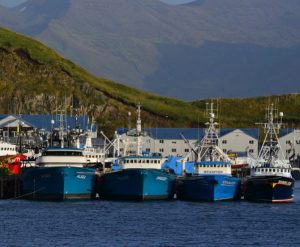
Government shutdown, if it continues, could cost Alaska’s lucrative Bering Sea fisheries
Even if the shutdown does persist, the federal government will allow the Bering Sea fisheries to start as scheduled, with an initial opening for cod Jan. 1, and a second opening for pollock and other species Jan. 20. But the fisheries are heavily regulated, and before boats can start fishing, the federal government requires inspections of things like scales — for weighing fish — and monitoring equipment that tracks the number and types of fish being caught. And the National Marine Fisheries Service, which regulates the Bering Sea fisheries, isn’t doing those inspections during the shutdown. >click to read<20:16

Bering Sea Cod caught quickly – “I wouldn’t be surprised if it’s the shortest ever,”
The Bering Sea federal trawl cod fishery closed in what may be record time on Feb. 11, just 22 days after the Jan. 20 opener, according to National Marine Fisheries Service Biologist Krista Milani in Unalaska/Dutch Harbor.,,, The North Pacific Fishery Management Program is now considering a plan to restrict the number of boats eligible to fish for cod in the Bering Sea. The fish council floated ideas to limit catcher vessel participation in the Bering Sea cod fishery, including controversial catch shares or individual fishing quotas, during a December meeting in Anchorage. >click to read< 15:00 

Bering Sea cod conflict brewing between on and offshore buyers
“Cod Alley” is getting crowded, and some fishermen want to limit the boats in the narrow congested fishing area in the Bering Sea. The North Pacific Fishery Management Council is looking at changes, including restricting flatfish factory trawlers from buying cod offshore. The Pacific Seafood Processors Association is pushing for restrictions on factory trawlers to protect its members’ shore plants in Unalaska, Akutan, King Cove and Sand Point. According to the PSPA’s Nicole Kimball, seven factory trawlers bought cod from 17 catcher boats in 2017,,, click here to read the story 21:23
The Man Who Got Americans to Eat Trash Fish Is Now a Billionaire
 Chuck Bundrant was a college freshman with $80 in his pocket when he drove halfway across the country to Seattle to earn a few bucks fishing. The year was 1961. He hasn’t stopped fishing since. And today, Bundrant, the founder and majority owner of Trident Seafoods, is worth at least $1.1 billion, according to the Bloomberg Billionaires Index.,,, Chuck Bundrant’s story is the stuff of industry legend. “He knew nothing about fishing boats, or catching and processing crab and salmon,’’ son Joe said in a corporate video two years ago. “He’d only watched a movie with John Wayne in it called ‘North to Alaska.’ And he heard there was money to be made on the fishing grounds, thousands and thousands of miles from home.’’ After a few years, Bundrant was looking for a way to start a business in the industry. He met two other crab fishermen — Kaare Ness and Mike Jacobson — and in 1973 the three put their money together and built the Billikin, a 135-foot boat that changed the seafood industry, according to Trident’s corporate history. click here to read the story 19:06
Chuck Bundrant was a college freshman with $80 in his pocket when he drove halfway across the country to Seattle to earn a few bucks fishing. The year was 1961. He hasn’t stopped fishing since. And today, Bundrant, the founder and majority owner of Trident Seafoods, is worth at least $1.1 billion, according to the Bloomberg Billionaires Index.,,, Chuck Bundrant’s story is the stuff of industry legend. “He knew nothing about fishing boats, or catching and processing crab and salmon,’’ son Joe said in a corporate video two years ago. “He’d only watched a movie with John Wayne in it called ‘North to Alaska.’ And he heard there was money to be made on the fishing grounds, thousands and thousands of miles from home.’’ After a few years, Bundrant was looking for a way to start a business in the industry. He met two other crab fishermen — Kaare Ness and Mike Jacobson — and in 1973 the three put their money together and built the Billikin, a 135-foot boat that changed the seafood industry, according to Trident’s corporate history. click here to read the story 19:06
Washington rep, trawlers scuttle rumors of Gulf legislation
 A Washington congresswoman’s office and members of the North Pacific trawl industry deny rumors that they are collaborating on federal fishing legislation that would circumvent the North Pacific Fishery Management Council process. The North Pacific Fishery Management Council regulates federal fisheries from three to 200 miles off the Alaska coast. Currently, the council is considering a regulatory package of several options to implement a quota share system for Gulf of Alaska groundfish fisheries, one of the last remaining North Pacific fisheries without such a system. Word surfaced that a Washington legislator had crafted language at the behest of the trawl industry to implement a preferred industry alternative at the congressional level. Read the rest here 13:54
A Washington congresswoman’s office and members of the North Pacific trawl industry deny rumors that they are collaborating on federal fishing legislation that would circumvent the North Pacific Fishery Management Council process. The North Pacific Fishery Management Council regulates federal fisheries from three to 200 miles off the Alaska coast. Currently, the council is considering a regulatory package of several options to implement a quota share system for Gulf of Alaska groundfish fisheries, one of the last remaining North Pacific fisheries without such a system. Word surfaced that a Washington legislator had crafted language at the behest of the trawl industry to implement a preferred industry alternative at the congressional level. Read the rest here 13:54



































